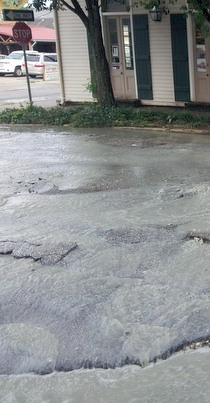Natural ground helps slow flows
 In the wake of the devastating Hurricane Harvey, questions are being asked about what elements of city planning – specifically pavement – could be changed to avoid such mass flooding events.
In the wake of the devastating Hurricane Harvey, questions are being asked about what elements of city planning – specifically pavement – could be changed to avoid such mass flooding events.
The US city of Houston is above sea level, and so is not susceptible to the same kind of flooding as a city like New Orleans.
However, there is a danger created by the widespread use of pavement, which covers the water-absorbing natural land and gives the torrential downpour nowhere to go.
Worldwide, the frequency and costs of flood damage from storms will continue to increase in line with increasing weather extremes and climate variability.
Strategies are needed to reduce the risk that are both physically sound and cost-effective.
These solutions can include natural ecosystems such as wetlands and reefs. However, there has been a lack of large-scale evaluations of the value of coastal wetlands for reducing property damage caused by flooding.
A new study has found protection provided by coastal wetlands helped avoid $625 million of flood damages in the United States during Hurricane Sandy.
Using high-resolution risk models from the insurance sector, researchers Siddharth Narayan, Michael Beck and colleagues estimated that wetlands across 12 states on the east coast of the United States helped to avert approximately $625 million in direct flood damages during Hurricane Sandy in 2012.
The authors also assessed the risk reduction benefits of salt marshes in Ocean County, New Jersey using a database of synthetic storms.
Here, the authors found that the presence of salt marshes led to a 16 per cent average reduction in annual flood losses and that marshes reduced the maximum annual risk to properties behind marshes at all elevations.
The authors say their findings could provide incentives for wetland restoration based on the significant risk reduction benefits.








 Print
Print